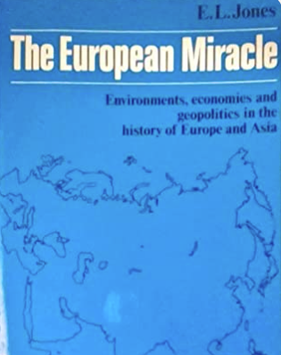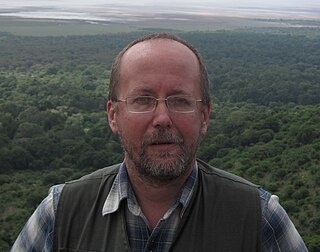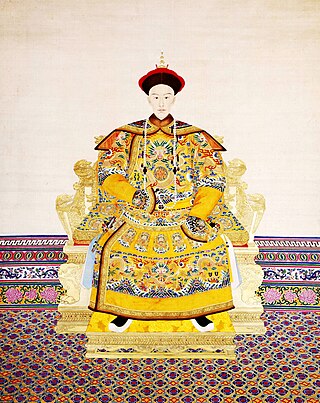Related Research Articles
In political science, a revolution is a rapid, fundamental transformation of a society's state, class, ethnic or religious structures. A revolution involves the attempted change in political regimes, substantial mass mobilization, and efforts to force change through non-institutionalized means.

The term "Third World" arose during the Cold War to define countries that remained non-aligned with either NATO or the Warsaw Pact. The United States, Canada and their allies represented the "First World", while the Soviet Union, China, Cuba, North Korea, Vietnam, and their allies represented the "Second World". This terminology provided a way of broadly categorizing the nations of the Earth into three groups based on political divisions. Due to the complex history of evolving meanings and contexts, there is no clear or agreed-upon definition of the Third World. Strictly speaking, "Third World" was a political, rather than economic, grouping.

Economic history is the study of history using methodological tools from economics or with a special attention to economic phenomena. Research is conducted using a combination of historical methods, statistical methods and the application of economic theory to historical situations and institutions. The field can encompass a wide variety of topics, including equality, finance, technology, labour, and business. It emphasizes historicizing the economy itself, analyzing it as a dynamic entity and attempting to provide insights into the way it is structured and conceived.
Nikolai Dmitriyevich Kondratiev was a Russian Soviet economist and proponent of the New Economic Policy (NEP) best known for the business cycle theory known as Kondratiev waves.
The idea of convergence in economics is the hypothesis that poorer economies' per capita incomes will tend to grow at faster rates than richer economies. In the Solow-Swan model, economic growth is driven by the accumulation of physical capital until this optimum level of capital per worker, which is the "steady state" is reached, where output, consumption and capital are constant. The model predicts more rapid growth when the level of physical capital per capita is low, something often referred to as “catch up” growth. As a result, all economies should eventually converge in terms of per capita income. Developing countries have the potential to grow at a faster rate than developed countries because diminishing returns are not as strong as in capital-rich countries. Furthermore, poorer countries can replicate the production methods, technologies, and institutions of developed countries.

Kenneth Pomeranz, FBA is University Professor of History at the University of Chicago. He received his B.A. from Cornell University in 1980, where he was a Telluride Scholar, and his Ph.D. from Yale University in 1988, where he was a student of Jonathan Spence. He then taught at the University of California, Irvine, for more than 20 years. He was elected a Fellow of the American Academy of Arts & Sciences in 2006. In 2013–2014 he was the president of the American Historical Association. Pomeranz has been described as a major figure in the California School of economic history.

World-systems theory is a multidisciplinary approach to world history and social change which emphasizes the world-system as the primary unit of social analysis. World-systems theorists argue that their theory explains the rise and fall of states, income inequality, social unrest, and imperialism.

The European Miracle: Environments, Economies and Geopolitics in the History of Europe and Asia is a book written by Eric Jones in 1981 to refer to the sudden rise of Europe during the Late Middle Ages. Ahead of the Islamic and Chinese civilizations, Europe steadily rose since the early modern period to a complete domination of world trade and politics that remained unchallenged until the early 20th century.

Andrey Vitalievich Korotayev is a Russian anthropologist, economic historian, comparative political scientist, demographer and sociologist, with major contributions to world-systems theory, cross-cultural studies, Near Eastern history, Big History, and mathematical modelling of social and economic macrodynamics.
Jack A. Goldstone is an American sociologist, political scientist, and historian, specializing in studies of social movements, revolutions, political demography, and the 'Rise of the West' in world history. He is an author or editor of 13 books and over 150 research articles. He is recognized as one of the leading authorities on the study of revolutions and long-term social change.

The Great Divergence or European miracle is the socioeconomic shift in which the Western world overcame pre-modern growth constraints and emerged during the 19th century as the most powerful and wealthy world civilizations, eclipsing previously dominant or comparable civilizations from the Middle East and Asia such as Qing China, Mughal India, the Ottoman Empire, Safavid Iran, and Tokugawa Japan, among others.
Leonid Efimovich Grinin is a Russian philosopher of history, sociologist, political anthropologist, economist, and futurologist.

The Eastern Origins of Western Civilisation, written by the political scientist John M. Hobson in 2004, is a book that argues against the historical theory of the rise of the West after 1492 as a "virgin birth", but rather as a product of Western interactions with a more technically and socially advanced Eastern civilization.
Cliodynamics is a transdisciplinary area of research that integrates cultural evolution, economic history/cliometrics, macrosociology, the mathematical modeling of historical processes during the longue durée, and the construction and analysis of historical databases.

During the Manchu–led Qing dynasty, the economy was significantly developed and markets continued to expand especially in the High Qing era, and imperial China experienced a second commercial revolution in the economic history of China from the mid-16th century to the end of the 18th century. But akin to the other major non-European powers around the world at that time like the Islamic gunpowder empires and Tokugawa Japan, such an economy development did not keep pace with the economies of European countries in the Industrial Revolution occurring by the early 19th century, which resulted in a dramatic change described by the 19th-century Qing official Li Hongzhang as "the biggest change in more than three thousand years" (三千年未有之大變局).
The sprouts of capitalism, seeds of capitalism or capitalist sprouts are features of the economy of the late Ming and early Qing dynasties that mainland Chinese historians have seen as resembling developments in pre-industrial Europe, and as precursors of a hypothetical indigenous development of industrial capitalism. Korean nationalist historiography has also adopted the idea. In China the sprouts theory was denounced during the Cultural Revolution, but saw renewed interest after the economy began to grow rapidly in the 1980s.
Chris Hann is a British social anthropologist who has done field research in socialist and post-socialist Eastern Europe and the Turkic-speaking world. His main theoretical interests lie in economic anthropology, religion, and long-term history. After holding university posts in Cambridge and Canterbury, UK, Hann has worked since 1999 in Germany as one of the founding Directors of the Max Planck Institute for Social Anthropology in Halle/Saale. Hann has made significant contributions to the subfield of economic anthropology.
In social science, the structural-demographic theory uses mathematical modeling to explain and predict outbreaks of political instability in complex societies. It originated in the work of sociologist Jack Goldstone and has recently been developed further by the quantitative historians Peter Turchin, Andrey Korotayev, Leonid Grinin and Sergey Nefedov.
The Great Divergence: China, Europe, and the Making of the Modern World Economy is a 2000 nonfiction book by Kenneth Pomeranz, published by Princeton University Press, on the subject of Great Divergence in the world history.
References
- ↑ Vries, Peer. (2010). The California School and beyond: how to study the Great Divergence?. History Compass, 8(7), 730-751.
- ↑ Duchesne, R. (2005). Peer Vries, the great divergence, and the California School: Who’s in and who’s out. World History Connected, 2(2).
- ↑ Jack Goldstone's forward in Grinin, L., & Korotayev, A. (2015). Great divergence and great convergence. A Global Perspective. N. p.: Springer International Publishing, 61.
- ↑ Frankema, E. (2024). From the Great Divergence to South–South Divergence: New comparative horizons in global economic history. Journal of Economic Surveys.
- ↑ Perez-Garcia, M. (2021). Global history with Chinese characteristics: autocratic states along the silk road in the decline of the spanish and qing empires 1680-1796 (p. 244). Springer Nature.